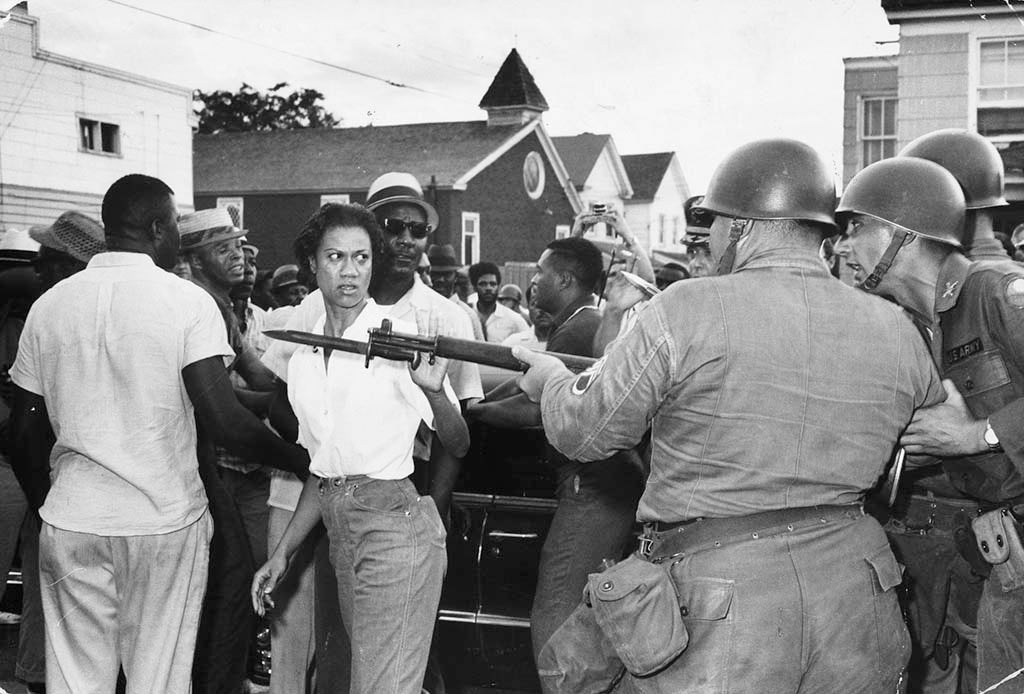
Whoever started the phrase that they weren’t their ancestors must have missed their history classes. So many of our ancestors have shown remarkable courage in the face of violence and hostility in the Jim Crow era and in generations prior. Gloria Richardson was among them.
The civil rights pioneer passed away at 99 years old on Thursday, but her images had become iconic for a new generation of Black women and men.
As the AP reports, Richardson “was the first woman to lead a prolonged grassroots civil rights movement outside the Deep South.” Her work organizing and leading the Cambridge Movement Maryland, where she grew up, was historical. But even casual observers of the civil rights movement may be most familiar with this side-eye a photographer captured as she stared down an armed National Guard trying to threaten her.

While Ms. Richardson coordinated non-violent sit-ins to desegregate a variety of establishments— from restaurants to movie theaters— she veered from the traditional non-violent civil rights movement of the South by supporting Black people’s right to armed self-defense.
The Howard graduate first began her activism on campus. After attending a conference of the Student Nonviolent Coordinating Committee (SNCC) in 1962, she became a member of SNCC’s executive board. She led the Cambridge, Maryland Nonviolent Action Committee with more militancy than traditional civil rights leadership, which made some hostile to her tactics.
In one example, Richardson refused concessions with then-Attorney General Robert Kennedy, who wanted to negotiate a right of access to public accommodation. At a press conference, Richardson said “a first-class citizen does not beg for freedom. A first-class citizen does not plead to the white power-structure to give him something that the whites have no power to give or take away. Human rights are human rights, not white rights.”







In 1964, with arch-segregationist George Wallace in town to run for president, National Guardsmen had occupied the streets. During the demonstration, a photographer captured her now-iconic image, epitomizing the boldness with which she had become known. The National Guard ended up gassing demonstrators, resulting in the death of one elderly man and infant.
Richardson eventually moved to New York, where she continued her activism and lived until her passing on Thursday.
Ms. Richardson lived a full and remarkable life, leaving behind a lasting image for all those who speak truth to power and remain bold in the face of it.





